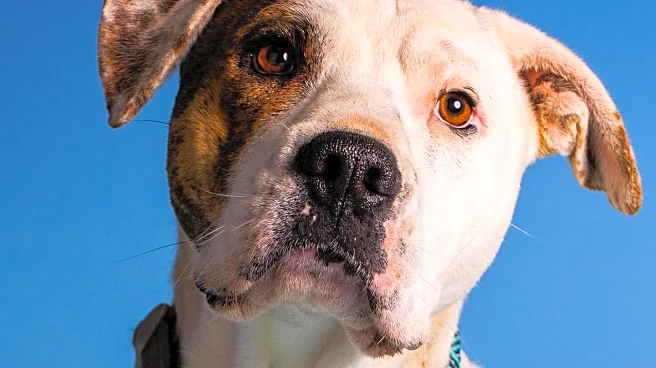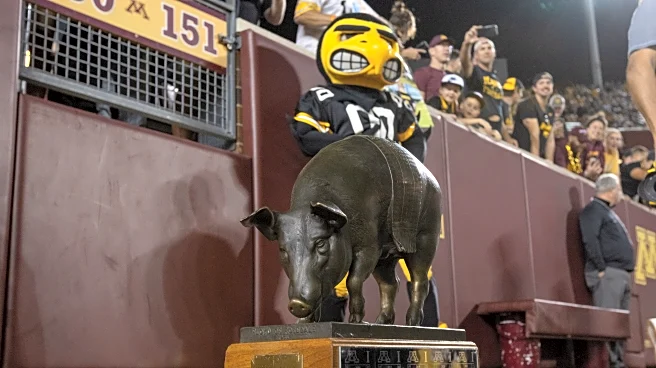What's Happening?
Brutus, a shelter dog at Fulton County Animal Services in Georgia, has captured attention online due to his joyful demeanor when let out of his kennel for walks. Despite showing signs of kennel stress,
Brutus was initially adopted but later returned as an 'owner surrender' without explanation. Volunteers, including Merve Gurses, highlighted Brutus's plight through social media, leading to his adoption by someone from Massachusetts. This story underscores the role of human interaction in reducing stress among shelter dogs and the impact of social media in facilitating adoptions.
Why It's Important?
The adoption of Brutus highlights the challenges faced by shelter dogs and the importance of community involvement in animal welfare. Social media has proven to be a powerful tool in raising awareness and connecting potential adopters with animals in need. This case demonstrates how digital platforms can extend the reach of local shelters, enabling out-of-state adoptions and providing animals with a second chance at a loving home. The story also emphasizes the need for continued support and engagement from volunteers and the public to ensure positive outcomes for shelter animals.
What's Next?
Fulton County Animal Services and LifeLine Animal Project continue to rely on community support and social media to promote adoptions and improve the lives of shelter animals. Volunteers are encouraged to share stories and engage with potential adopters online. The shelter aims to increase awareness about the benefits of adopting shelter dogs and the positive impact of human interaction on their well-being. Future efforts may focus on expanding outreach and enhancing adoption processes to facilitate more successful placements.
Beyond the Headlines
Brutus's story sheds light on the emotional and psychological challenges faced by shelter animals, particularly those experiencing kennel stress. It raises ethical considerations regarding the responsibilities of adopters and the importance of providing a stable, loving environment for animals. The case also highlights the cultural shift towards using social media as a tool for advocacy and change in animal welfare, encouraging broader societal engagement in supporting shelter animals.












